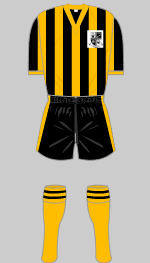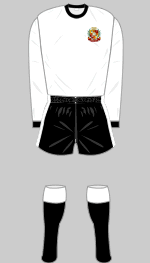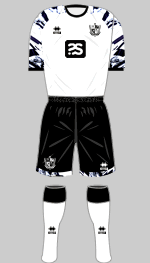



Port
Vale
Formed 1879
Founder member of Division Two 1892. Failed re-election 1896.
Elected to Division Two 1898. Resigned 1907.
Replaced Leeds City in Division Two 1919.
Kit History
Burslem Port Vale
1884
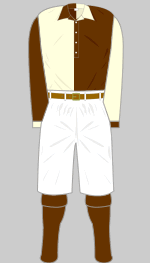
1887-1889 L
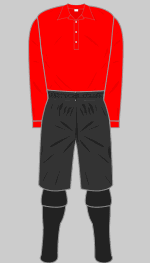
1892-1896 m x C E
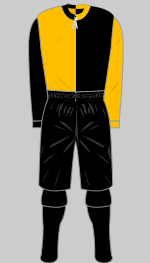
1896-1897 a x
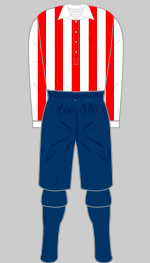
1898-1902 m C E
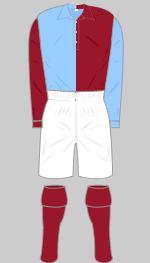
1900-1902 x C

1902-1907 a m p x
Port Vale
1907

1907-1909
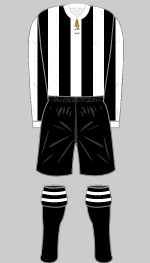
1909-1910 C

1910-1912
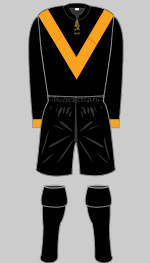
1912-1914 n x D

1914-1919
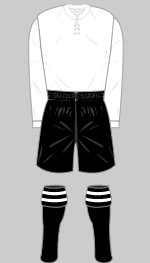
1919-1921 n x C E
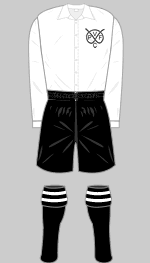
1921-1922 C E
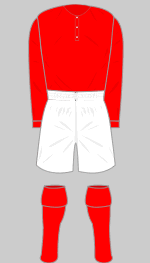
1923-1927 C

1928-1929 C

1929-1930 C
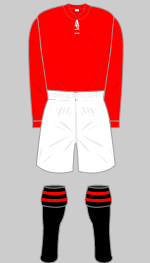
1933-1934 a l n x C
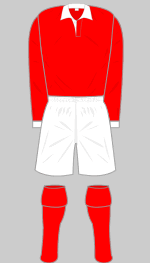
1934-1936 C
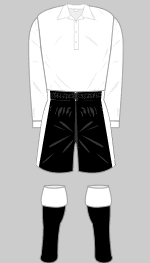
1936-1939 c C
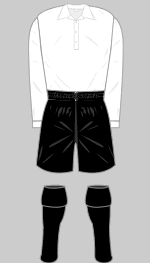
1944-1945 C
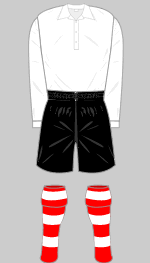
1947-1948 n
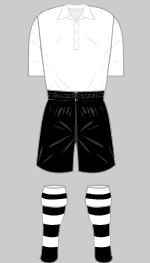
1948-1950 x
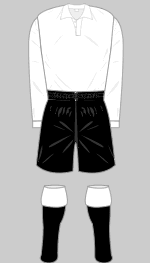
1950-1951 d
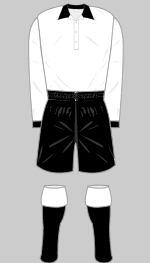
1951-1952 e
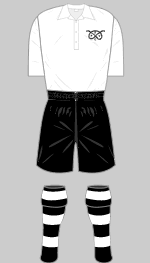
1952-1953 x
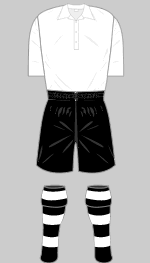
1953-1954 x
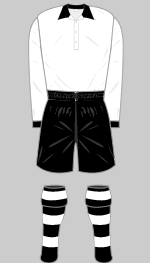
1954-1956 a k n
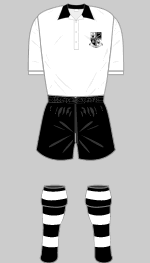
1956-1957 p

1957-1958 x
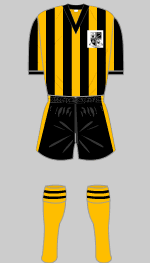
1958-1959 x K
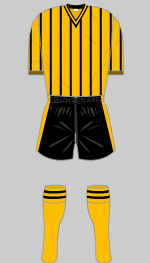
1960-1961 p
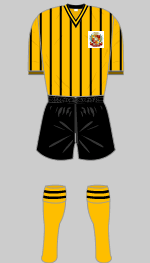
1961-6 Jan 1962 J K
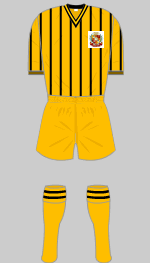
13 Jan-May 1962 a J

1961-1962 K
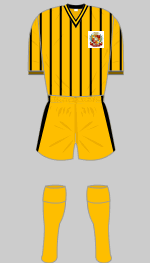
1962-1963 M N
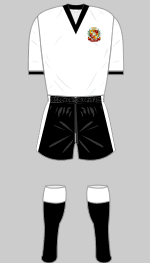
1964-1965 j
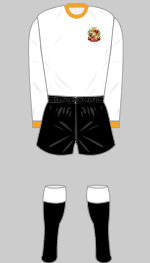
1965-1966 x C
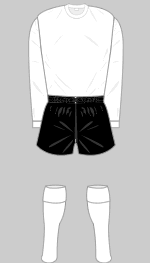
1966-1967
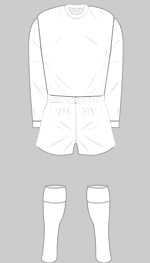
1967-1971 g s x C
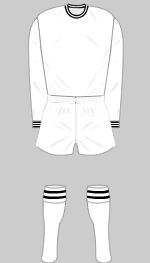
1971-1973 t C

1972-1973 a

1973-1974 a s
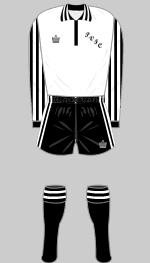
1974-1976 a v
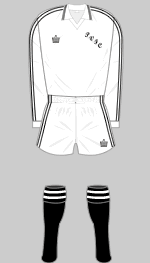
1976-1977 k

1977-1978 t
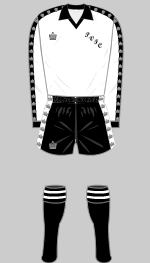
1978-1979 (1) t F
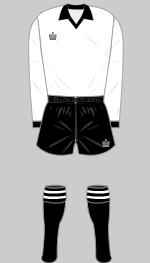
1978-1979 (2) G
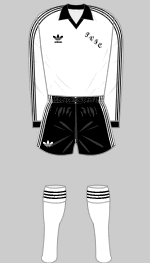
1979-1980 m o t x

December 1979 A

1980-1981 m o t x
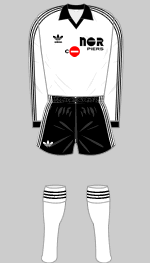
1981-1982 z A C
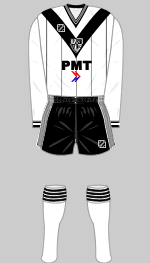
1982-1984 a m r t B x
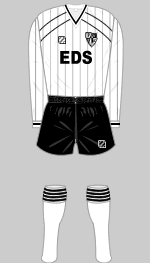
1984-1985 x B
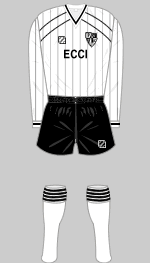
1985-1986 a B
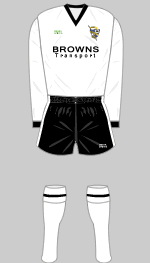
1986-1987 A B
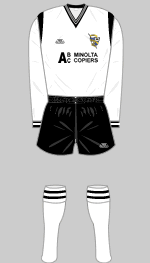
1987-1988 B
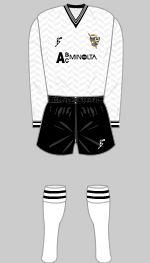
1988-1989 x B

1989-1990 a p w x
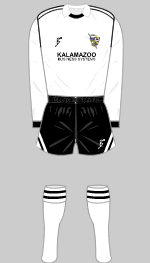
1990-1991 q w x
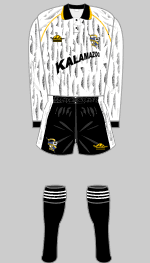
1991-1992 a
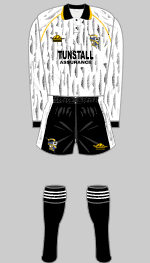
1992-1993 q
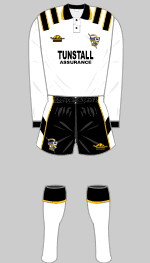
1993-1995 o q
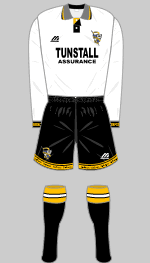
1995-1997 i p q y
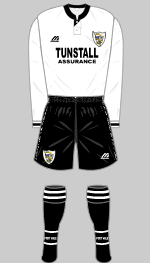
1997-1999 i
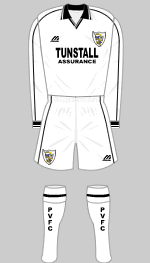
1999-2001 i

2001-2003 i
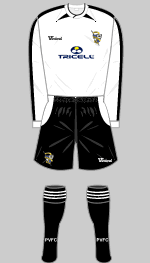
2003-2005 i
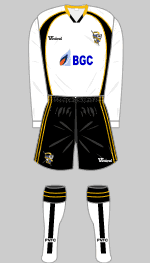
2005-2006 a
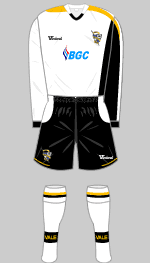
2006-2007 a
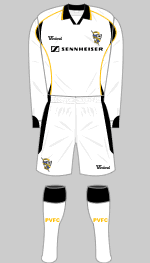
2007-2008 a
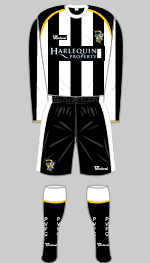
2008-2010 a
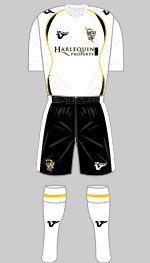
2010-2012 a
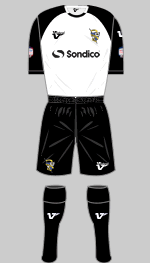
Aug-Oct 2012 a
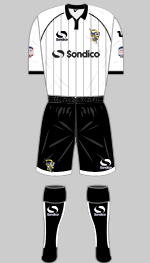
Oct-Nov 2012 a
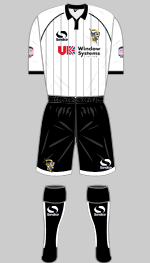
Nov 2012 -2013 a
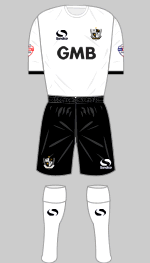
2013-2014 a
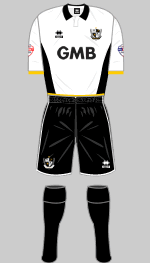
2014-2015 a
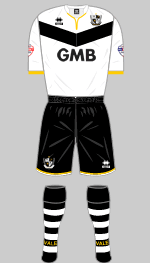
2015-2016 a
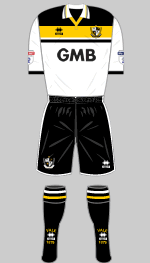
2016-2017 a
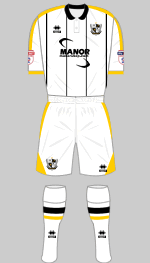
2017-2018 a

2018-2019 a
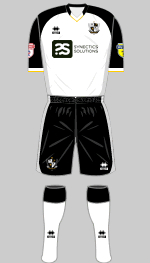
2019-2020 a
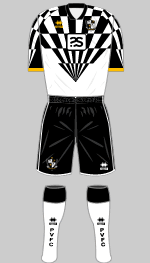
2020-2021 a
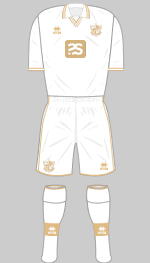
2021-2022 a
Background
 The club was formed after a meeting in a suburb of Stoke-on-Trent at
"Port Vale House" from which the name Port Vale FC was taken.
Officially the meeting took place in 1876 but a newspaper article (Golden Penny Nov 12 1898) discovered by Ray Shaughnessy in 2013 states that the year was 1879. In 1884 the club moved to Burslem (one of the five Potteries towns that
make up Stoke) and became known as Burslem Port Vale. In 1892, the Football
Alliance was incorporated into the Football League as Division Two. At
the time, Port Vale were members of the Midland League but when Alliance
club Birmingham St George's folded, it was Vale who were invited to take
their place in the new Second Division. There is no record of why such
a modest club received this promotion in its fortunes.
The club was formed after a meeting in a suburb of Stoke-on-Trent at
"Port Vale House" from which the name Port Vale FC was taken.
Officially the meeting took place in 1876 but a newspaper article (Golden Penny Nov 12 1898) discovered by Ray Shaughnessy in 2013 states that the year was 1879. In 1884 the club moved to Burslem (one of the five Potteries towns that
make up Stoke) and became known as Burslem Port Vale. In 1892, the Football
Alliance was incorporated into the Football League as Division Two. At
the time, Port Vale were members of the Midland League but when Alliance
club Birmingham St George's folded, it was Vale who were invited to take
their place in the new Second Division. There is no record of why such
a modest club received this promotion in its fortunes.
In 1896, having had to seek re-election for the third time in only four seasons, Burslem Port Vale lost their League status and returned to the Midland League. It is known that the club played in red shirts and "grey serge" knickers followed by amber and black during this period. After they beat First Division Sheffield United in the FA Cup, the club was elected back into the Second Division in 1898. They continued to struggle and in 1907, faced with serious financial problems, the club resigned from the League and almost went out of business. Only one year later, local rivals Stoke FC found themselves in the same position and resigned their place leaving the Potteries without a League club.
Following a move to a new ground, the club became known simply as Port
Vale and joined the Central League. In 1919, Vale unsuccessfully applied
for election to the League once again following a decision to expand the
Second Division with four new clubs. In October 1919, however, the club
was invited to take over 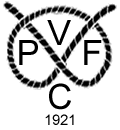 the fixtures of Leeds City who had been expelled
following a scandal over illegal payments.
the fixtures of Leeds City who had been expelled
following a scandal over illegal payments.
The first evidence we have of the club's crest being worn on players' shirts is from 1921-22. From 1923 the team wore red shirts and white knickers (without a crest), reverting to white and black in 1936.
Port Vale made little impact and were relegated in 1929 to Division Three
(North) although they returned as  champions the following season, going
on to finish fifth in the Second Division in 1931, their highest ever
league position. In 1936 they went down again and for the next eleven
years they played variously in the Northern or Southern sections of the
Third Division owing to their central location.
champions the following season, going
on to finish fifth in the Second Division in 1931, their highest ever
league position. In 1936 they went down again and for the next eleven
years they played variously in the Northern or Southern sections of the
Third Division owing to their central location.
Programmes from 1937-38 showed the club crest of the period, which incorporated the Staffordshire knot with the initials PVFC and the club nickname.
 A modified crest appeared in programmes in the 1940s but there is (so far) no photographic evidence that this was worn on team shirts until 1952.
A modified crest appeared in programmes in the 1940s but there is (so far) no photographic evidence that this was worn on team shirts until 1952.
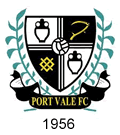 In 1954 Vale romped to the Third Division (North) championship and reached
the FA Cup semi-final only to drop back into Division Three (South) in
1957.
In 1954 Vale romped to the Third Division (North) championship and reached
the FA Cup semi-final only to drop back into Division Three (South) in
1957.
It was in the 1956-57 season that the club adopted the coat of arms of the Borough of Burslem as their crest, which itself contained elements taken from the arms of the six towns making up the Potteries. The scythe comes from the Tunstall arms, the fretted cross from those of Audley while the two pots represent the towns associated with Josiah Wedgewood.
 The following season Vale were founder members of the new Fourth
Division, winning the title at the first attempt.
The following season Vale were founder members of the new Fourth
Division, winning the title at the first attempt.
The early Sixties brought
a revival of the amber and black stripes of 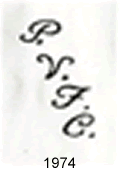 an earlier era and a more colourful crest but there was
little to celebrate on the pitch and the last half of the decade was spent
in the Fourth Division. In 1968, in an uncanny reversal of the sequence of events
that had played out in 1919, they were expelled from the Football League
because of financial irregularities but were immediately voted back in by
sympathetic clubs.
an earlier era and a more colourful crest but there was
little to celebrate on the pitch and the last half of the decade was spent
in the Fourth Division. In 1968, in an uncanny reversal of the sequence of events
that had played out in 1919, they were expelled from the Football League
because of financial irregularities but were immediately voted back in by
sympathetic clubs.
Crests were not fashionable in the latter part of the Sixties and Vale wore plain white shirts between 1966 and 1974 when Admiral introduced a strikingly novel top with striped sleeves. This featured a cursive script logo that was used on and off until 1981.
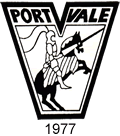 Promotion came in 1970 and eight seasons were spent in the Third Division
before Vale dropped back into the Fourth in 1978. An unusual badge was worn during the relegation season but was thereafter dropped and the script reinstated.
Promotion came in 1970 and eight seasons were spent in the Third Division
before Vale dropped back into the Fourth in 1978. An unusual badge was worn during the relegation season but was thereafter dropped and the script reinstated.
The 1978-79 season presents us with a bit of a puzzle. There are several photographs of players wearing Admiral shirts with that 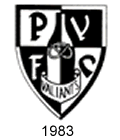 company's trademark logo-trim on the sleeves but the few match day photographs that have come to light show strips without trim were worn at least until December. It appears that Admiral may delivered two sets of slightly different design.
company's trademark logo-trim on the sleeves but the few match day photographs that have come to light show strips without trim were worn at least until December. It appears that Admiral may delivered two sets of slightly different design.
During the 1980s Vale were promoted and relegated with some regularity. A new crest was introduced in 1983 with a Stafford knot superimposed on a pottery kiln all on a quartered shield, both references to their original badges. This appeared on the Hobbott designed kits between 1983 and 1986.
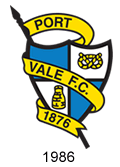 In 1986 a brand new crest was designed: this retained the quartered shield of the original, Staffordshire knot and bottle kiln but now with the club's name printed on a banner weaving in front of the main shield. The blue in the quarters seem to be purely decorative.
In 1986 a brand new crest was designed: this retained the quartered shield of the original, Staffordshire knot and bottle kiln but now with the club's name printed on a banner weaving in front of the main shield. The blue in the quarters seem to be purely decorative.
It was as a Third Division club that Port Vale's fortunes improved in 1988. After beating Spurs in a Fourth Round FA Cup-tie, they secured promotion to Division Two via the play-offs. Despite a set back in 1992 when they were relegated, Vale bounced back in 1994 and remained in the second tier until 2000 when they were relegated to Nationwide Division Two.
Vale went into administration in 2002 with debts in the region of £1.5m and was eventually taken over by the Valiant 2001 consortium who established a new board representing supporters. The club finally came out of administration in 2003-04. Due in part to the financial restrictions imposed, the team slid down the divisions and in 2008 they were in the fourth tier (League Two).
Unfortunately the club's financial difficulties continued and in March 2012 they were forced into administration again when HMRC took out a winding-up petition over unpaid tax. The ten-point penalty 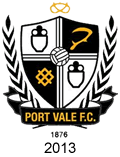 incurred cost Vale a chance of reaching the play-offs. Thanks to the support of Stoke-on-Trent City Council, who wrote off £1.5m of the £2.8m of the moneys owed them and injected £440,000 over the summer to help the adminstrators keep the club running, liquidation was avoided but Vale were docked another 10 points at the start of the 2012-13 season. Because of these difficulties, the team started the season wearing an "emergency kit" with their regular strip expected in October.
incurred cost Vale a chance of reaching the play-offs. Thanks to the support of Stoke-on-Trent City Council, who wrote off £1.5m of the £2.8m of the moneys owed them and injected £440,000 over the summer to help the adminstrators keep the club running, liquidation was avoided but Vale were docked another 10 points at the start of the 2012-13 season. Because of these difficulties, the team started the season wearing an "emergency kit" with their regular strip expected in October.
The crest was given a face lift in 2013, no doubt to mark a fresh start, based on the 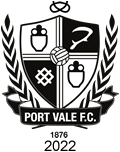 traditional design surmounted with the Staffordshire knot. Amber trim made a welcome return the team kit in 2014.
traditional design surmounted with the Staffordshire knot. Amber trim made a welcome return the team kit in 2014.
The strip introduced for 2021-22 returned to all-white trimmed with light gold. While this was received quite well by some supporters there were many who were not at all happy that traditional back trimmings were missing. Reservations were put aside, however, when the team wore their white strip when they beat Mansfield 3-0 in the play-off final to clinch promotion to League One. Black shorts were restored the following season and the amber accents were removed from the crest.
Sources
- (a) Port Vale Official Website
- (c) Wrexham FC (Images of Sport)
- (d) Gillingham FC (Images of Sport)
- (e) Stoke on Trent
- (f) QPR FC (Images of Sport)
- (g) Football Cards
- (h) Classic Kits
- (i) empics
- (j) Workington AFC - Images of Sport (Paul Eade 2003)
- (k) Football Focus
- (l) The Football Encyclopaedia (Associated Sporting Press 1934) Information provided by Arthur Fergus
- (m) Association of Football Statisticians - provided by Pete Wyatt
- (n) Pete Wyatt
- (o) Ralph Pomeroy
- (p) Pete's Picture Palace
- (q) David King
- (r) Anthony Lovatt
- (s) Football League Review provided by Simon Monks
- (t) Alick Milne
- (u) Alasdair Thorbur
- (v) Steve Browne
- (w) Martin Gooday
- (x) Keith Ellis
- (y) Adrian Gaffney
- (z) Anthony Borrett
- (A) Karl Fletcher
- (B) Paul
- (C) onevalefan
- (D) Mike Baggaley
- (E) Archivofootball
- (F) Old Football Shirts
- (G) Karl Fletcher
- (H) Pathe News
- (I) The Senior Tigers Club
- (J) Peter Stevenson
- (K) Jim's Shed
- (L) Charles Alcock's Football Annuals 1869-1891 researched by Robin Horton
- (M) Peter Stevenson
- (N) One Vale Fan
Crests are the property of Port Vale FC. My thanks go to Oleg Baranov for supplying crest artwork and to Mark Hughesdon for his research on the early Staffordshire knot crest.
